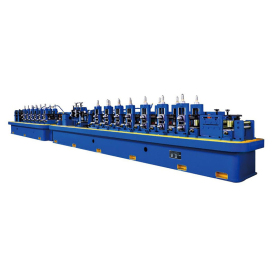
Ferrit: Unlocking the Secrets of Nature’s Most Versatile Element for Sustainable Solutions and Innovative Technology
Ferrit, an element found in various forms throughout nature, is increasingly gaining attention in both scientific research and practical applications. Deriving its name from the Latin word “ferrum,” meaning iron, this remarkable substance is steeped in rich history and continues to pave the way for innovations in sustainability and technology. As society grapples with complex environmental challenges, exploring the multifaceted uses of ferrit could hold the key to developing more effective and durable solutions.
Ferrit is most commonly recognized in its metallic form, iron, which has been an integral part of human development for thousands of years. From the early days of human civilization, iron has served as a foundational element in tools and structures. Its robustness and versatility have made it indispensable across various industries. However, the exploration of ferrit extends beyond its traditional uses, encompassing fields such as materials science and renewable energy.

Ferrit: Unlocking the Secrets of Nature’s Most Versatile Element for Sustainable Solutions and Innovative Technology
At the core of ferrit’s allure is its magnetic property. Ferrimagnetism—characterized by opposing magnetic moments within a compound—plays a significant role in the development of advanced materials. Researchers are actively examining ferrimagnetic materials in the context of electronics, where they can enhance the performance of devices ranging from smartphones to high-efficiency motors. Nanotechnology, in particular, capitalizes on ferrit’s magnetic properties. By manipulating materials at the nanoscale, scientists can design innovative structures that drastically improve efficiency and functionality in electronics.
Moreover, ferrit is making waves in the field of renewable energy. As the world seeks sustainable alternatives to fossil fuels, ferrit-based compounds are emerging as promising candidates in energy storage solutions. Ferrit’s unique properties enable it to be incorporated into next-generation batteries and supercapacitors, offering higher energy densities and faster charge rates. This is particularly significant as energy demands continue to rise alongside global efforts to combat climate change.
Another groundbreaking application of ferrit is found in the realm of biomedicine. Ferrit-based nanoparticles have gained traction as tools for targeted drug delivery systems and in magnetic resonance imaging (MRI). By leveraging ferrit’s magnetic qualities, researchers can control the bio-distribution of drugs within the body, enhancing therapeutic effectiveness while minimizing side effects. Additionally, the precise imaging capabilities provided by ferrit-based contrast agents allow for earlier and more accurate diagnoses—a gamechanger for healthcare professionals.
Aside from its industrial applications, ferrit presents opportunities in environmental remediation. The ability to engineer ferrit-based materials enables the removal of heavy metals and pollutants from contaminated waters and soils. The magnetic properties of ferrit allow for the easy extraction of these materials after treatment, offering a sustainable method for cleanup that minimizes ecological impact.
Despite its myriad applications, the harvesting and processing of ferrit raise certain environmental concerns. The mining of iron ore, which is predominantly composed of ferrit compounds, can result in habitat destruction and pollution if not managed judiciously. Thus, a focus on sustainable mining practices, coupled with efforts to recycle iron and ferrit-based materials, is essential. Innovations in recycling technology can turn old metal products into new resources, thereby reducing the carbon footprint associated with virgin material extraction.
The future of ferrit looks promising as researchers, engineers, and policymakers come together to drive forward-thinking initiatives. Increased collaboration within these fields can facilitate a better understanding of ferrit’s potential while addressing sustainable practices that underscore its use. The ongoing advancements in technology, intertwined with a strong commitment to environmental conservation, can help shape a future where ferrit leads to transformative solutions across industries.

Ferrit: Unlocking the Secrets of Nature’s Most Versatile Element for Sustainable Solutions and Innovative Technology
In conclusion, ferrit, often overshadowed by its more common counterpart, iron, emerges as a pivotal element in contemporary science and technology. Its magnetic properties and versatility position it as a cornerstone for innovations ranging from advanced electronics to sustainable energy solutions. By harnessing the secrets of ferrit, we may unlock new pathways to a sustainable, technologically advanced world that thrives in harmony with nature. As the quest for greener solutions intensifies, ferrit stands ready to play an integral role in shaping the future.Precision Solid state HF welder



